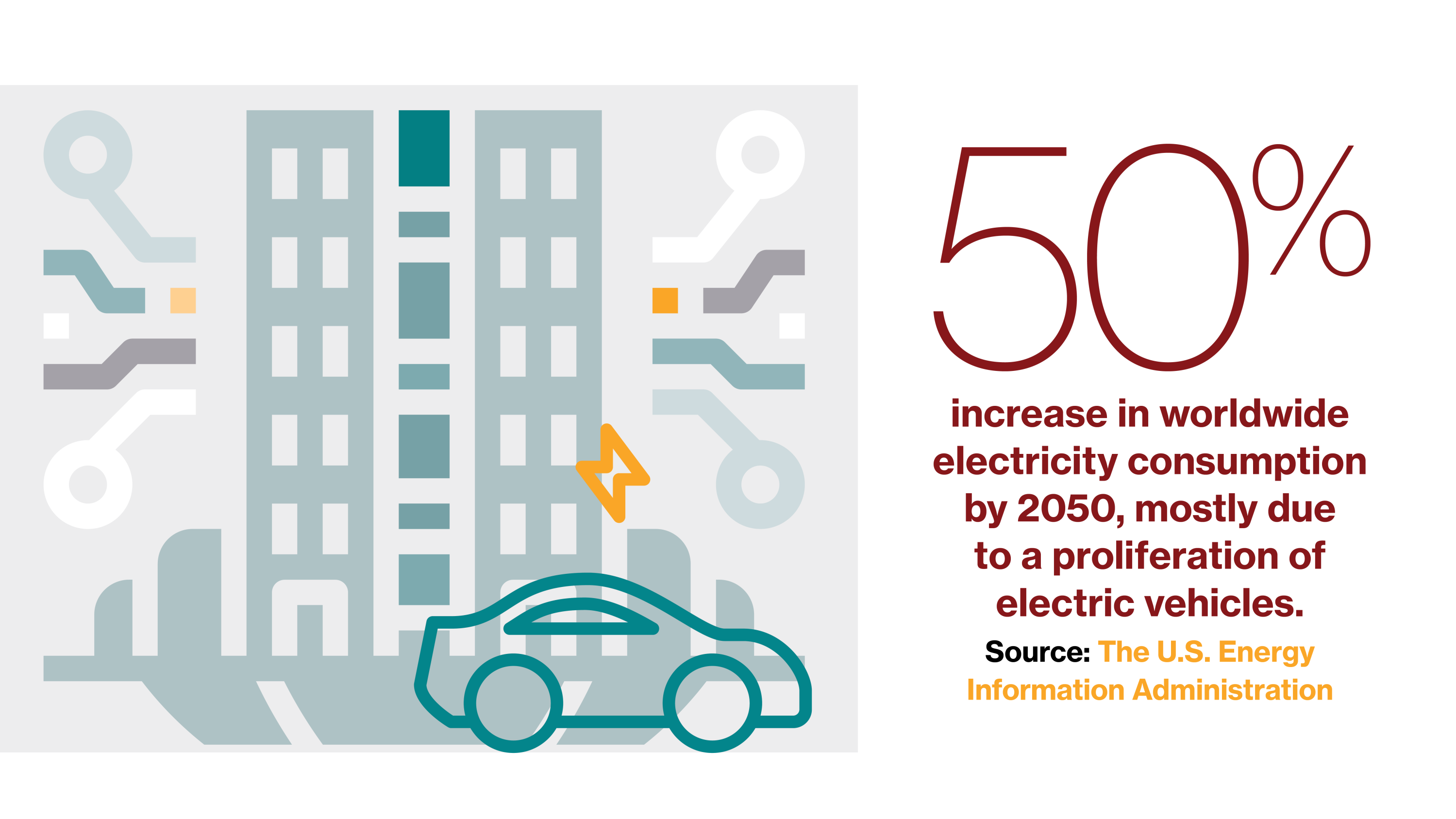Innovation will fuel e-mobility adoption
Evolving consumer demands are also helping e-mobility gain mainstream traction. In fact, automotive consulting firm AutoPacific reports that consumer demand in the U.S. increased to 5.6% of total light vehicle sales in 2022. This number was 3.3% in 2021. One reason for this uptick is that consumers are looking for eco-friendly alternatives to traditional transportation vehicles, which contribute approximately one-quarter of all energy-related carbon dioxide emissions to the atmosphere.
These shifts in policy and consumer sentiment not only herald a new era for e-mobility, but highlight the need for continued technological advancement. “Scaling e-mobility technologies more efficiently is critical to speeding widespread adoption of electric vehicles and reducing carbon emissions across the globe,” said Jeff Harris, vice president of corporate and portfolio marketing at Keysight Technologies, a U.S.-based provider of design, emulation, and test equipment for electronics. He continues, “There are immediate opportunities for innovation across the e-mobility ecosystem that will help make EVs more affordable, convenient, and desirable to consumers.”
As organizations rise to this challenge, innovations are emerging, from new battery designs to EV charging and EV supply equipment (EVSE) or charging infrastructures that, together, promise to push the envelope on electric vehicle adoption and contribute to a cleaner planet.
This content was produced by Insights, the custom content arm of MIT Technology Review. It was not written by MIT Technology Review’s editorial staff.
Evolving consumer demands are also helping e-mobility gain mainstream traction. In fact, automotive consulting firm AutoPacific reports that consumer demand in the U.S. increased to 5.6% of total light vehicle sales in 2022. This number was 3.3% in 2021. One reason for this uptick is that consumers are looking for eco-friendly alternatives to traditional transportation vehicles, which contribute approximately one-quarter of all energy-related carbon dioxide emissions to the atmosphere.

These shifts in policy and consumer sentiment not only herald a new era for e-mobility, but highlight the need for continued technological advancement. “Scaling e-mobility technologies more efficiently is critical to speeding widespread adoption of electric vehicles and reducing carbon emissions across the globe,” said Jeff Harris, vice president of corporate and portfolio marketing at Keysight Technologies, a U.S.-based provider of design, emulation, and test equipment for electronics. He continues, “There are immediate opportunities for innovation across the e-mobility ecosystem that will help make EVs more affordable, convenient, and desirable to consumers.”
As organizations rise to this challenge, innovations are emerging, from new battery designs to EV charging and EV supply equipment (EVSE) or charging infrastructures that, together, promise to push the envelope on electric vehicle adoption and contribute to a cleaner planet.
This content was produced by Insights, the custom content arm of MIT Technology Review. It was not written by MIT Technology Review’s editorial staff.
